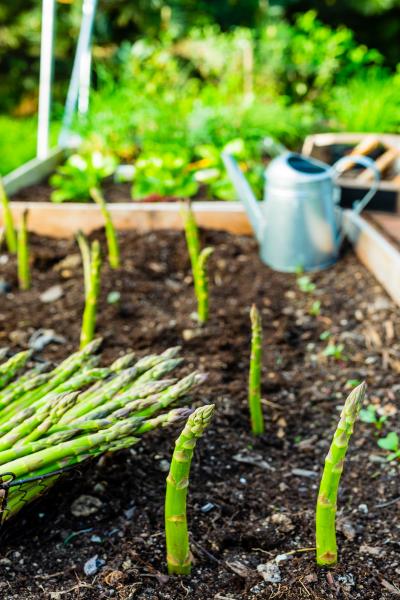
It is great to try and grow a “challenging plant,” as that is one of the best ways to learn about gardening. Even if the plant doesn't thrive or produce a harvest, you'll learn a lot and become a better gardener!
Different plants can be challenging for different people. For instance, the challenge for some people might be not having a lot of space in which to grow a spreading plant like pumpkins. The challenge for others might be living in a place that has colder nights throughout the summer--tomatoes, for example, don't like cold nights!
Here are two plant characteristics that many people might find challenging.
1. A long germination time. (Germination time is how long it takes a seed to sprout and begin to grow.) Asparagus, lavender and rosemary take more than two weeks to germinate.
- Click on the link here to learn more about how to grow asparagus: https://foodhero.org/seeds/asparagus.
- Find tips on starting any seeds here: https://foodhero.org/healthy-food/what-are-some-things-i-should-know-about-planting-seeds.
2. Plants that "bolt", or bolt quicker than other plants. Bolting is something most plants do as a result of hot weather; it is when a plant goes from providing something to harvest to instead producing flowers and seeds. Leafy greens and cilantro are two examples for which you can try and a shade cloth over them in the summer to lower the sun and heat they receive. Or grow them in a container and move then into a shaded, cooler areas in the summer, or heat of the day.
Other plants the Food Hero Garden team has heard can be challenging from Grow This! participants include artichokes, carrots, celery, and onions.




